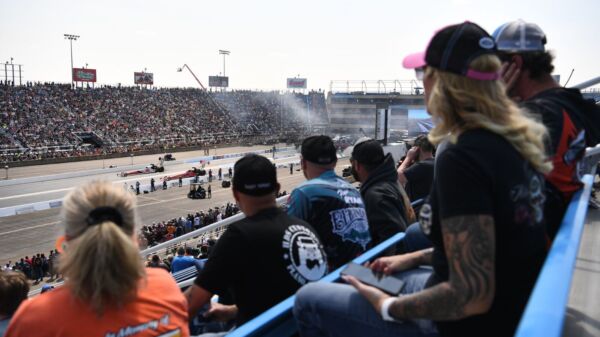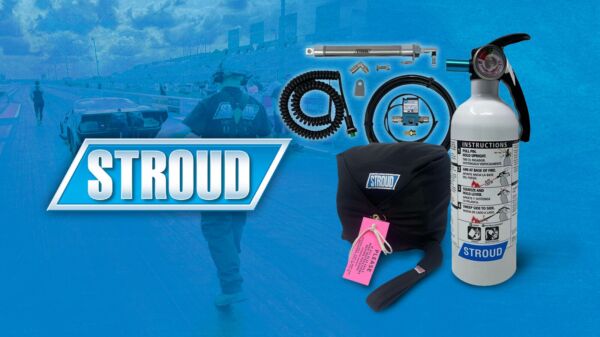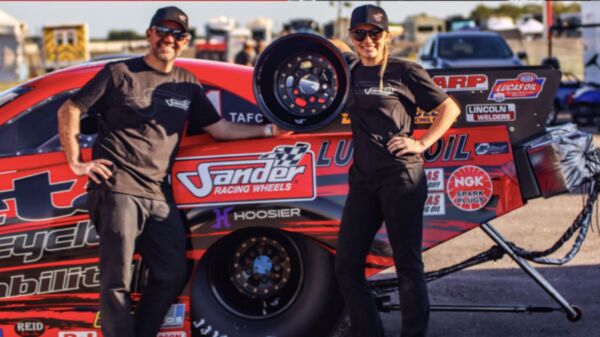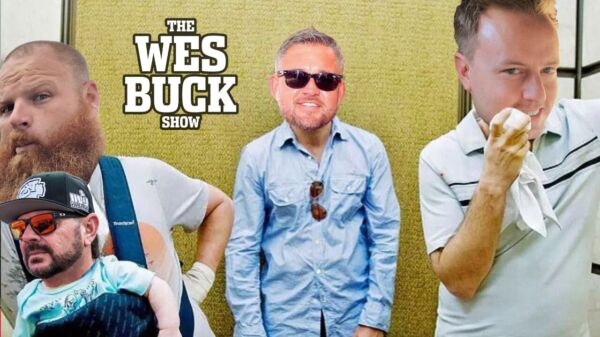Since the early 2000s, the NHRA Lucas Oil Series’ Top Alcohol Dragster and Top Alcohol Funny Car classes have been seen by many as feeder classes for Top Fuel and Funny Car. After all, numerous current Top Fuel and Funny Car drivers spent time in the alcohol ranks before moving up to the “big show.” But Kevin and Kris Hool, two brothers who have competed in Top Alcohol Funny Car for more than 30 years, are trying to change the narrative with their new Pro Alcohol Drag Racing (PADR) series. Their vision is for the alcohol classes to be the destination, not a stop along the way.
[Editor’s Note: This story originally appeared in DI #184, the State of Drag Special Issue, in September/October of 2023.]
“Our main emphasis is geared toward team ownership in the alcohol ranks,” says Kevin, who tunes the brothers’ K&K Motorsports Top Alcohol Funny Car driven by Kris. “We do not believe that the primary purpose of alcohol racing is to populate the nitro ranks. We’ve been racing in alcohol for over 30 years, and in that time 95 percent of the teams we have encountered have shown little to no interest in racing in Top Fuel or Funny Car. Alcohol racing isn’t the minor leagues of fuel racing. Instead, we want Pro Alcohol Drag Racing to be the major leagues of alcohol racing.”
PADR is still in the planning phases, with the goal of launching a schedule of six events in 2024. The touring quarter-mile series will feature screw-blown, clutch-equipped, methanol-burning Funny Cars competing in a unique format. The series plans to have eight-car qualified fields, with winners advancing and losers dropping to another bracket to continue racing. A full eight-car field will provide all drivers with three runs on race day. Payouts and bonus points will be distributed based on how drivers finish in positions 1 through 8.
“On Sunday, you’re going to see many more pairs of racing,” Hool says. “You’ve got people in the seats, you’re going to have cars on the racetrack. Rather than the standard eight-car format, which is seven runs total, we’re going to offer a track 12 runs on race day itself.”
The series will also use a modified Pro tree, where the green light and all three amber bulbs will be triggered simultaneously to signal the start of the race. There will not be a .400 delay between the green and ambers.
“The drivers and teams that have worked hard at making themselves and their cars quicker and more efficient are being penalized by the current .400 Pro tree system,” Hool says. “The modern Alcohol Funny Car has simply outpaced the current starting structure, and the PADR believes it’s time for a change to make Alcohol Funny Car racing better. Everyone wants to see and appreciate which drivers and cars are the best at reacting to the light, not who’s the best at ‘delaying’ their reaction to the light. Let’s find out who really is the best at the starting line, in both car and driver.
“It will also eliminate at least 99 percent of the red lights,” Hool adds. “That’s another thing tracks are really open to. During red lights, a guy will normally just idle it down track knowing he’s red lit, so it takes the excitement of the run out of race day. This will eliminate most of the red lights, so you’ll have much more side-by-side racing.”
In an effort to keep costs and performance levels in check, PADR will limit the number of parts each team can bring to each race. Each team will be allowed two engine blocks, two crankshafts, and two sets of cylinder heads for use during each event. Additionally, a point penalty will be assessed for any engine block or crankshaft replacement during qualifying or eliminations. If a team goes through its allocation of those limited parts, they’re considered out of competition. There’s no penalty or limit on parts like valves, valve springs, pistons, connecting rods, and other consumables.
“If you think about it, drag racing is the only major motorsport in the world that doesn’t have a limit on how many parts you can use during an event, or even during race day,” Hool says. “The whole destroying engines and ‘Hey, I’ve got more in the trailer’ thing, that’s got to stop or this sport as a whole is really in trouble. Even Formula One, the richest racing series in the world by far, still limits their teams to three engines, three complete power units, per year. Drag racing in general, not just alcohol racing, is going to have to start taking a look at that. You can’t limit costs or performance by telling racers what they can bring. You can only limit costs and performance by telling them how many they can bring. We’re going to institute that.”
Hool believes limiting the number of parts used will be more effective than limiting the development of those parts.
“If you want to bring a better set of cylinder heads than what I have, if you’re talented enough and if you know enough to put a better set of heads together, bring them,” Hool asserts. “We’re opening up that kind of technology. We’re not going to have any cylinder head rules. But you can only bring two sets.”
PADR’s mission is not just to reduce the costs associated with alcohol racing, but also to increase the opportunities for publicity and revenue.
“We are working hard to provide the highest-paying prize package and the best promotional programs available in alcohol racing,” says Hool, who also notes there won’t be entry fees for PADR teams. “We are working with tracks that love Alcohol Funny Car racing to make sure that alcohol teams are ‘the show’ and not the program filler cars that are stuck in the staging lanes as spectators leave the facility. The best drivers in drag racing, driving the toughest cars to drive in drag racing, deserve better, and that’s why we are here.”
The series has already attracted the attention of sponsors. DMP Awnings came on board as the official awning supplier, and NGK Spark Plugs recently signed on as the official spark plug and ignition technology company. They’ve also labeled it the American Energy Pro Alcohol Drag Racing series to promote U.S. oil and gas initiatives.
“We’re in contact with almost 20 different energy companies across the nation right now to see if they want to get involved with their advertising dollars and help the series out a little bit,” Hool says. “We’re going to hopefully spread the word about American energy, including the average guy out there putting a hole in the ground to get oil out. We’re going to highlight those small companies.”
Several current touring Top Alcohol Funny Car drivers, including Kevin’s brother Kris, have already committed to competing in PADR’s inaugural season. The ultimate goal, though, is to entice entirely new teams to make the jump up to the class. Hool believes PADR’s unique format will level the playing field while also giving younger teams with smaller budgets the opportunity to make more passes and gain the experience necessary to compete with established teams.
“We have raced full-time, for a living, competing in 15 to 19 races per season, for almost 15 years now,” Hool says. “We have done all that on a very modest budget. You can race competitively on a budget and you can make money. We want to bring that experience to Pro Alcohol Drag Racing and build alcohol racing back to healthy levels.”
Hool realizes his goals are bold, and the series’ approach is a unique one, but he’s prepared to step out and take on the challenge. He sees the need for change in the alcohol racing community, and he feels PADR might offer the solutions to some of the problems plaguing the class.
“Many have asked how we are going to do all this,” he says. “I answer, ‘I don’t know, but if we wait until we know everything, we are going to be too late.”



This story was originally published on October 20, 2023. 






























